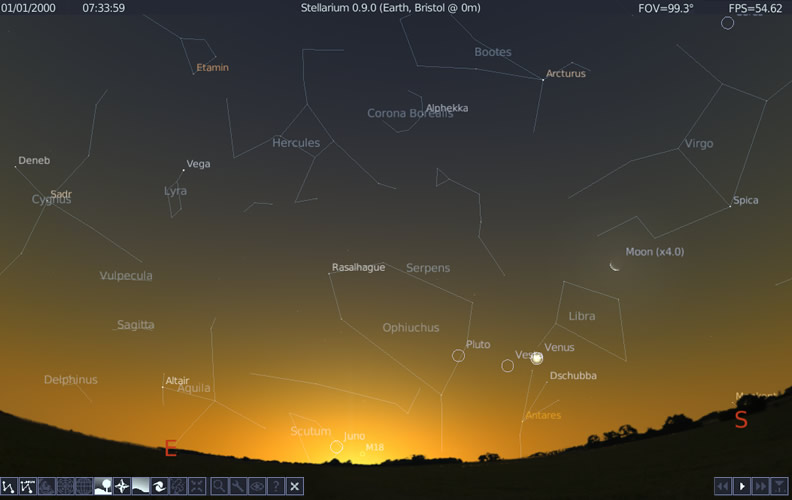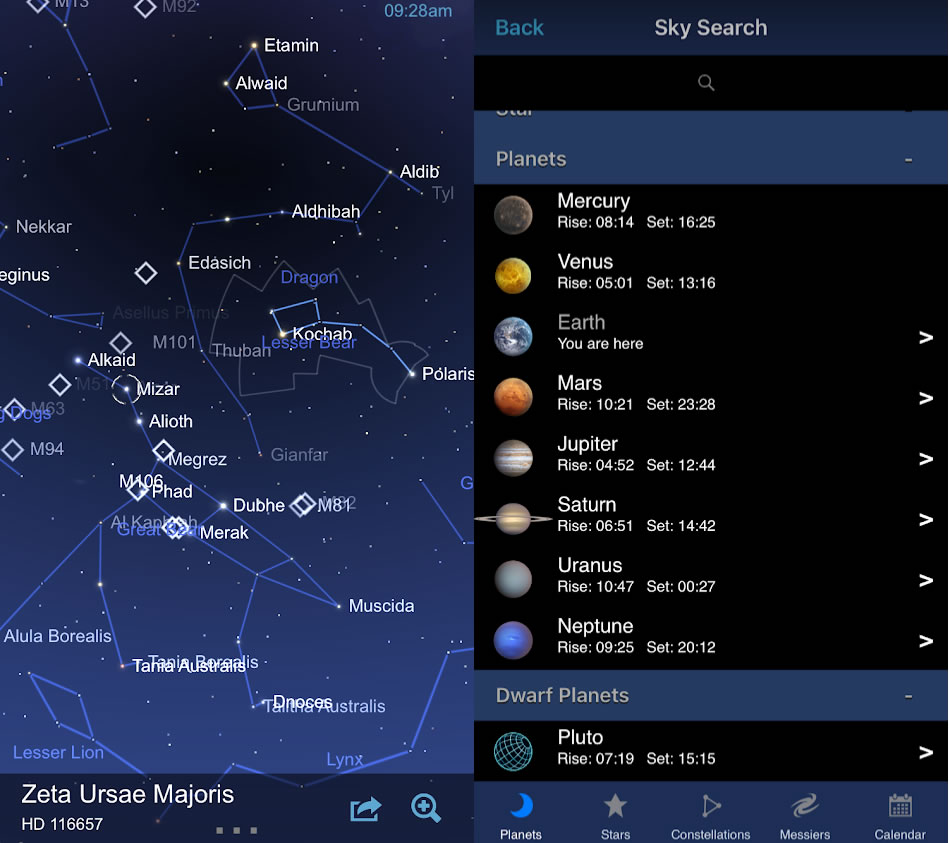Charts, Planispheres, Apps & Software
6.5 - Be able to use information from star charts, planispheres, computer programs or ‘apps’ to identify objects in the night skyStar maps and charts
Star maps and charts are published in books, newspapers and magazines. They tend to show what is in the sky during a month or season. Frequently there are two maps, one showing the view of east to west towards the south, the other showing the view of west to east towards the north. On star maps, brighter stars appear as a larger dot and smaller stars as a smaller dot. Some maps are equatorial with the northern constellations stretched.
Planisphere
A planisphere is a quick and easy way to find out what stars are viewable at any time. It consists of two discs fastened to each other. On one of them is a hole so that a portion of the disc underneath can be seen. Around the edge are hours of the day. On the underneath disc is a star map showing every constellation available for viewing from a general location e.g. Northern Europe. Around the edges are equally spaced days of the year. The edge of the round area represents the horizon. The ecliptic is a line through which the Sun and planets appear to move, and cuts through constellations known as the Zodiac. The two discs are fixed at the pole axis (so Polaris is not shown).
To find the stars available on 4th September at 10pm you would move the hour dial that says 10pm on the overlay next to the date on the underlay and point the planisphere north to see a representation of the stars available in the sky at that time.
Software
Software can show the sky at any given moment and can offer other features like 3d maps of planets or ability to change location or time etc. Stellarium is free and is updated with new features and objects. Celestia is also a well regarded.
Apps
Apps can be downloaded on Apple and Android phones. Some are free, some are paid for. Good apps include features such as being able to point your device to the sky and identify stars, planets and constellations. Some may connect with a small telescope that can then be controlled by your mobile device.
There are many available for both Android and IOS. Experiment by downloading a few free ones to compare. Some are easier to use than others and others may have functionality that you may not need. Just as a quick comparison, Google Sky Map for Android is very easy to use and is perfect for casual observations and finding things quickly. Star Chart for IOS is slightly harder to use but has detailed maps and information about other celestial goings on. Both are great at what they do. Find what is best for you.
Interactive
Interactive
Links
- Driftedin Download a programme to make your own planisphere
- Kids Cosmos Montly Star Maps
- Stellarium Computer Software
- We love Astronomy Best Astronomy apps




 | © All Rights Reserved |
| © All Rights Reserved |